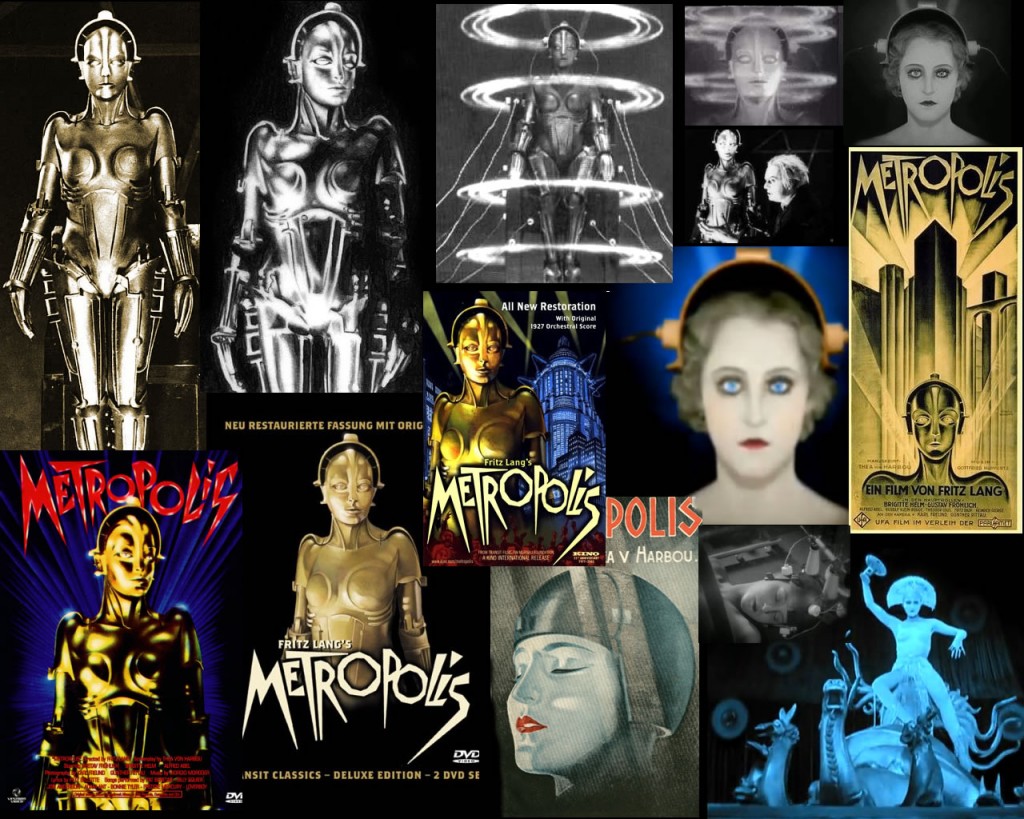 Metropolis Science-Fiction and Lifelike Robot – Was it Ahead of its Time?
Metropolis Science-Fiction and Lifelike Robot – Was it Ahead of its Time?
The book Metropolis is dated back to 1925 and the film (see below pictures of Maria transformed into a shiny then lifelike female robot), the most expensive silent movie ever made, was made two years later. A droning yet very powerful storyline, it is difficult to believe it dates back to the 1920s. Yes, the quality of the film, the old 35 mm tape and a later duplicate copy of 16mm, support its true age but the plot is not dissimilar to our lifestyles of today.
Reminiscent of Today?
It describes a life on two levels – thinkers (the managers) and doers, the workers who, like in many of today’s big businesses, exist as numbers or statistics, rather than as real human beings. The two level separation is carried one stage further, in that the workers work underground, eyes glazed with such monotonous work, while the masters work above ground, in what features as a brightly-lit city, heavy with traffic and taxis and sporting not only the Eternal Gardens but alsoYoshiwara, its own red light district, for the pleasures to be found within.
The Storyline.
Fredersen is the powerful master of the city of Metropolis, devoid of feelings and he is the almighty one who controls life underground. He lives in his own purgatory, brought on by the death of Hel, the woman he loved, who originally belonged to another (Rotwang). Whilst Rotwang is responsible for making man machines to work in the underground city, his loss of Hel causes him to create a female robot in her image. That is, all except for the face, for this intelligent female robot, which can read minds and can destroy men, remains faceless for a significant part of the story.
The real problems start when Freder, the son of the master of Metropolis, finds out about this underground life of Hell and sets off on a course to right the wrongs of his father. Whilst basking in the pleasures of the Eternal Gardens, where geisha-like girls attend to his every whim, he sees a young girl enter, followed by many ghostlike children. Struck with instant love for her, Freder goes on a mission of not only finding the girl, Maria, but also discovering the underground world that drones on and on, without sleep or remission.
The vocabulary of the book keeps you in the moment. Machines are described in vivid detail e.g. ‘the machine which was like Ganesha, the god with the elephant’s head’ and the same machines are described again and again. Yet, although you are kept in the moment, it is difficult to keep track of what is going on, as some vocabulary is very much elaborated.
‘Black in the background, the cathedral, ungodded, unlit, the place before the broad steps swarming with human beings and amid them, surrounded by gasps of madly despairing laughter, the howling of songs of fury, the smouldering of torches and brands, high up on the pyre . . ‘.
Such detail will come across very effectively in film form, much easier than trying to keep track of such busy animation in the crowded vocabulary of a book.
As the story continues, it comes to light that the female robot has been given the face of Maria. So now there is one evil and one genuine Maria and the story takes on the role of an action-packed thriller, with fighting in the underground world, the cathedral and in the streets.
Experts in Their Time.
When watching the original film, one can’t help but wonder how the filmmakers of that time created such special effects. Even now, in the twenty-first century, aren’t we still in awe of what special effects can achieve?
The story ending of Metropolis has a most unusual twist, one that could not have been imagined and, like the very best of love stories, it will bring tears to your eyes. Why spoil it, by saying any more?
Written by Denise Watson

